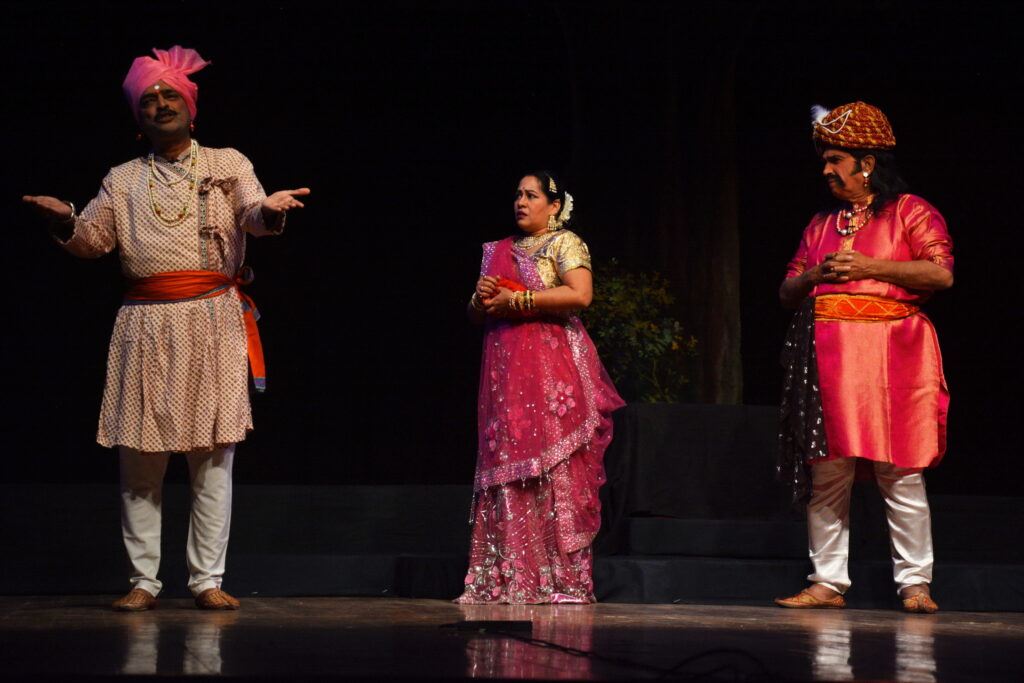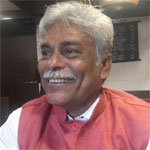Ancient Indian literature is full of meaningful, classic plays, ranging from Shakuntalam to Mrcchakatika, which portray a wide range of human emotions, right from romance to political revolution. The connoisseurs of theatre should thank the Nehru Centre, Mumbai, for hosting every year a festival of musical plays. This year the festival was flagged off on 8th August, and concluded on 11th August, 2018. This was the 26th edition of this festival in which one got to see perhaps the first political play of ancient India, ‘Mrcchakatika’.
The ancient play
The play Mrcchakatika (The Little Clay Cart) is attributed to Sudraka, generally thought to have lived sometime between 3rd century BC and 5th century AD. Scholars hold that of all the Sanskrit dramas, Mrchhakatika remains one of the most celebrated and widely performed plays in the West. It is a play in ten acts. The most noteworthy feature of this play is that it departs from Sanskrit Natyashastra, which argues that a play should be based on the lives of nobility. Instead, this play depicts the lives of ordinary peasants, slaves, and poor people. The play is supposed to have been derived from an earlier Sanskrit play Charudatta in Poverty by playwright Bhasa. Unlike other Sanskrit plays, this does not borrow its storyline from epics or mythology, another huge departure from the tradition of Sanskrit plays. This is generally regarded as model of prakarana plays, as opposed to nataka plays like Kalidasa’s Shakuntalam. More often than not, a prakarana play depicts middle-class concerns and conflicts.
The play staged at the Nehru Centre’s festival was based on a Marathi adaptation by Govind Ballal Deval (1855-1916), who reduced the original ten act play into seven acts. This adaptation was ready in 1887, and was staged by the Kirloskar Natak Mandali. The modern version staged at the Nehru Centre festival was an edited version in two acts, and was produced by a Pune-based drama group ‘Bharat Natya Sanshodhan Mandir’. It is a musical play that was highly popular in the heydays of musical plays in Marathi, which entertained generations of Maharashtrian audiences in the closing decades of the 19th century, and early decades of the 20th century.
The plot
Charudatta is a young, rich man of Ujjaini city, the locale of the play. He is generous to a fault, and in the process of charity, has impoverished himself and his family. Despite the poor conditions he is living in now, his reputation as an honest and intelligent man remains intact. People still flock to him to seek his advice on many matters.
The play opens when Vasantsena, a courtesan of wealth and beauty, is chased by Samasthanaka, a half-mad brother-in-law of King Palaka and his retinue. Vasantsena seeks shelter in Charudatta’s residence when soldiers try to get physical with her. Vasantsena is already enamoured of Charudatta whom she has seen in the temple of Kama. Charudatta is already married and has a son, Rohasena who does not come on the stage in this version of the play, neither does Charudatta’s wife. Despite this, their love blossoms and she entrusts Charudatta, her new lover, with a casket of jewelry to ensure more meetings.
Unfortunately, Vasantsena’s plans come to naught as a thief Sharvilaka steals this casket from Charudatta’s home. Sharvilaka is not a full-time thief. He steals these jewels as he wants to buy the freedom of Madanika, who is Vasantsena’s slave and confidant. Vasantsena immediately recongnises her jewelry when presented to her as payment, and yet decides to let Madanika go. Vasantsena wants to inform Charudatta of this new development, but before that Charudatta sends her a very expensive necklace to make good the loss of her jewelry. Maitreyaa, a poor Brahmin and a close friend of Charudatta, warns him against sending expensive necklace to Vasantsena as he fears that the courtesan is really after Charudatta’s remaining wealth.
As their love progresses, Samasthanaka reappears in the plot, and wants to kidnap Vasantsena. His feelings are not reciprocated by Vasantsena. Enraged, he strangles Vasantsena and hides her under a pile of leaves. Still seeking vengeance, he promptly accuses Charudatta of this crime. Charudatta could have been hanged, but for the timely arrival of those jewels that nullifies the crime. As per the tradition of almost all ancient Indian plays, all is well that ends well.
The performance
The version presented by the Bharat Natya Mandir, Pune, is an edited version of the play adapted by Deval in Marathi. In the original play, Charudatta’s crime is pronounced guilty and is to be executed, and his wife is about to throw herself onto the funeral pyre. Both are saved. Meanwhile, Samasthhanaka is arrested and the good prince Aryaka deposes the wicked king Palaka. Aryaka’s first order is to restore the fortunes of Charudatta, and he also gives him an important post at his court. The play ends on a happy note when Charudatta, true to his character, pleads with the King to forgive Samasthanaka.
It is interesting to note that plays like Mrcchakatika still hold sway over audiences. The huge hall of Nehru Centre was almost full, thanks to the popularity of Mrcchakatika through the ages.
The lead role of Charudatta was essayed by Charudatta Aafale, a singer of repute, and was ably supported by Gauri Patil (Vasantsena), Dr. Ram Sathye (Maitreya), Sanjeev Mehendale (Sharvilak)‚ Kavita Tikekar (Madanika), and Anand Panse (Samasthanaka). They all are competent singers and actors who hold the audience in thrall. Director Ravindra Khare has properly set the tone of the play. The stage decoration was taken care of by Vishwas Pangarkar and costumes by Rakesh Gholap. In musicals like this, music is an integral part of the show. Here Rahul Gole was on organ and tabla was played by Prathmesh Deodhar and mrudung by Manoj Bhandavalkar.
A historical play like Mrcchakatika demands a lot of detailing to carry conviction with the audiences. Khare ensured that these details were taken care of.


 [/column]
[/column]